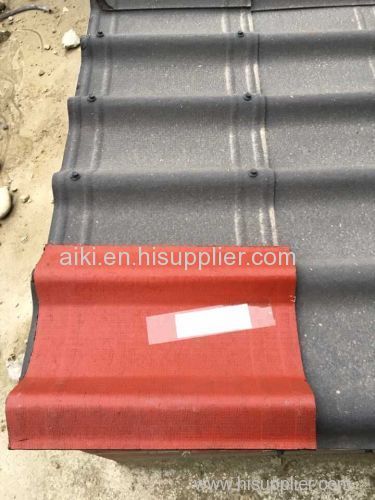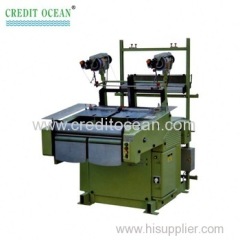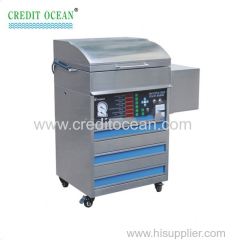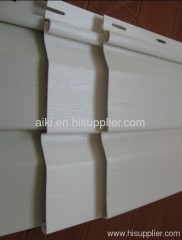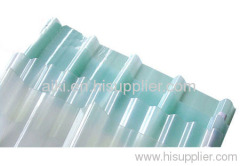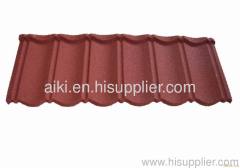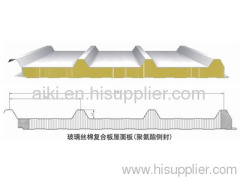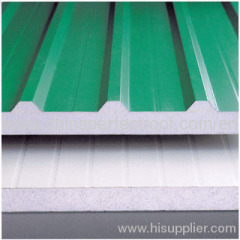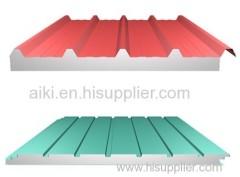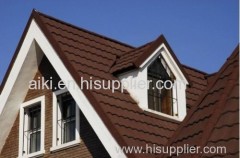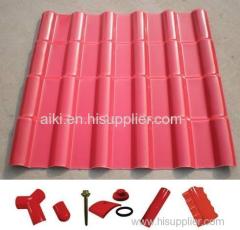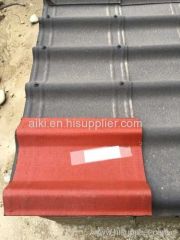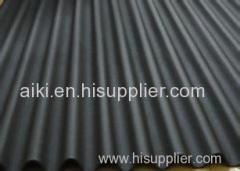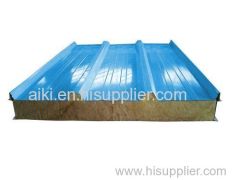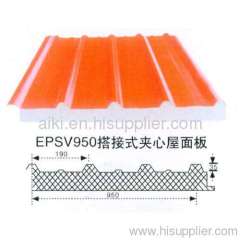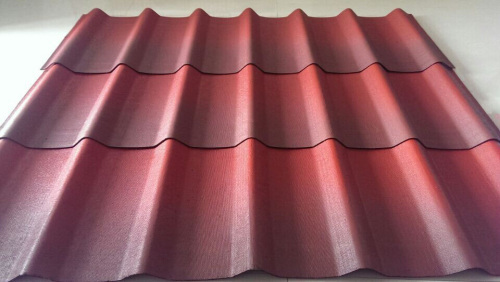
|
Qingdao Perfect Roof Co.Ltd
|
Corrugated Sheet Roofing Corrugations
| Price: | 2.0 USD |
| Payment Terms: | T/T |
| Place of Origin: | Shandong, China (Mainland) |
|
|
|
| Add to My Favorites | |
| HiSupplier Escrow |
Product Detail
Corrugated sheet roofing material is widely available and easy to use.
Corrugations should run in a straight line between the highest and lowest poi
Corrugated sheet roofing material is widely available and easy to use.
Corrugations should run in a straight line between the highest and lowest points, and at a right angle to the purlins (the intermediate supports).
The overlaps (ends and sides) depends upon the sloop of the roof.
Purlin spacing should suit the end laps required for the size of sheet to be used.
Sheets should be laid so that the side overlaps are directed away from the prevailing wind.
All purlins should be in one plane and parallel to each other. They should be properly anchored to the supporting superstructure.
Ends of all sheets should be supported by purlins. The free overhang at the eaves should not exceed 300 mm.
8 mm diameter (min) hook bolts, crank bolts or coach screws, should be inserted through 10 mm diameter drilled holes.- NEVER PUNCHED - in the crown of the corrugations.
Nuts or screws should be tightened lightly at first, and then tightened again when a dozen or more sheets have been laid. At intermediate purlins, they should not be tightened in an attempt to make the sheet rest on the purlins.
A cat-ladder or roof board should always be used when working on a roof for safety of the person and to avoid damage to the roofing material.
Installation of corrugated roof sheeting
These notes are intended to cover the use and installation of corrugated roof sheets such as PVC, other plastics and bitumen fibre sheets. Although very different as materials and where they are used, they do have similar properties regarding flexibility and weight. One advantage of these corrugated materials is that it is far more rigid than a flat sheet of a similar type and thickness. This enables considerable savings in both weight and cost, it also makes the sheet relatively easy to handle. Generally all these types of material can be used either as roofing or vertical cladding.
Most of these sheeting tends to be susceptible to condensation when used as cladding for outhouses etc. - being relatively thin they tend to have low thermal insulation properties. Condensation will be reduced if the interior of the structure is well ventilated.
Being thin sheeting, most types will act as a 'drum skin' when it rains. The sheets can also become heated by direct sunlight and this heating can be radiated into the building making it very uncomfortable in hot weather. A false ceiling suspended under the roof can reduce both of these problems, the void between the roofing and ceiling must be adequately ventilated to avoid excessive temperatures (especially important where plastic roof sheeting is used) and to minimise condensation. Choosing light colour sheets (or, where the material allows this, painting them white/silver) will reduce the internal heating effect.
PVC has a service temperature range of -20°C - +70°C. Care must be taken to ensure that it is not used in situations where the maximum service temperature could be exceeded. As such it is not recommended for use in situations where a false ceiling is to be erected below the rooflight, as this will cause heat build up in the sheet, exceeding the maximum temperature of +70°C which may lead to discoloration or distortion of the sheet.
Storing before use
Plastic and bitumen sheets must not be stored in a stack in direct sunlight, as solar heating will cause the sheets in the centre of the stack to distort. If sheets have to be left outside prior to installation, they should be covered completely by an opaque, light-coloured tarpaulin.
Avoid working with sheet materials in windy conditions, even in light breezes it may be necessary to temporarily weight the sheets while working with them - this is especially relevant to light weight plastic sheets.
The underlying roof structure
The roof structure will comprise rafters and purlins. The rafters take the full weight of the roof material plus any 'environmental build-up' (such as snow) and anyone working on the roof.
The pitch of the roof will determine the amount of end overlap necessary. In order to ensure that this can be achieved and to leave a neat appearance, the sheets should first be arranged loose on the roof. The end and side overlaps are a 'minimum', to avoid unnecessary cutting of sheets, the overlaps can be increased to hide any excess. At the same time, the positions of fixing screws and any saw cuts which may be needed can be marked on the sheets.
The spacing of the purlins needs to be arranged to suit the roofing while the rafters can be spaced as appropriate to take into account the overall weight. The spacing of the purlins, the end and side overlaps of the sheets depends on the angle of the roof - for most types of sheet, the following are good guidelines but check with the manufacturers of any particular type of sheet:

